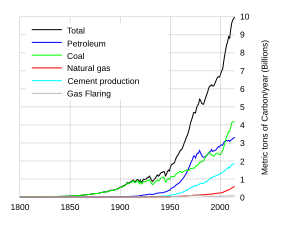 Image via WikipediaBy Finn Turner
Image via WikipediaBy Finn TurnerOn July 11, 2011 Australia announced an ambitious plan to start taxing carbon emissions. When the program is implemented in July of 2012, they will be the first and only country with a national program that targets large carbon dioxide emissions, one of the leading greenhouse gasses.
According to Australia's Department of Climate Change website, the program calls for a $23 Australian ($24.60 US) tax per ton of carbon dioxide. The top 500 biggest emitters of the greenhouse gas are the targets of the tax. The carbon-pricing scheme will have the biggest impact on manufacturing, utility, and transportation sectors of the economy. The price per ton of carbon dioxide will rise by 2.5 percent per year until 2015, when a carbon-trading program will be introduced.
The goal, the government says, is to reduce Australia's overall carbon emissions five percent below 2000 levels by 2020. By 2050, between carbon taxes and carbon trading, the goal is further reduce carbon emissions by 80 percent of 2000's levels. The estimated carbon cuts are the equivalent of taking 45 million cars a year off the road.
Taxes don't come cheap, and generally need the support of voters. In order to minimize its economic impacts the "Securing a Clean Energy Future" program will give some of the money collected through the carbon taxes back to residents. The concept is similar to money taxpayers receive in Alaska through the Permanent Fund - or a return on investment of surplus tax money from the oil and gas industry.
Australia's carbon tax money will be distributed at the household level based on a formula. The goal, it seems, is to not only build a wide-base of support, but also to offset the cost of the government program that is likely to be passed on to the consumer when fuel, utility, and even things like food prices increase to absorb the new tax.
The average individual household can expect to pay an additional $9.90 (AU) weekly in fuel and energy costs once the program takes effect in 2012, according to the Clean Energy Future website that the Australian government built to explain the carbon pricing plan. According to the site, the average weekly government subsidy payout to the average household will be $10.10 (AU). Nine out of ten households can expect to receive some form of government assistance, either through personal income tax credits or an increase in pension allowances.
Besides a frequently asked question section and other well-produced content explaining the basics of the plan, there is also an interactive tool for families and households to estimate what impacts and compensation they can expect once the carbon-pricing program begins. The estimator is similar to a carbon footprint calculator.
The money earned by the government through taxing carbon dioxide will not only be funneled back to households, but it will also be spent on infrastructure projects to increase national energy efficiency and developing renewable energy sources.
The carbon-pricing model is not without its critics and the usual counter arguments - mainly that the government's program will harm the business environment and discourage investment. Regardless, the plan is ambitious for a nation that produces 1.3 percent of global carbon dioxide emissions.
For more information about carbon emissions, greenhouse gasses, and climate change please visit http://www.definitionofglobalwarming.com
Article Source: http://EzineArticles.com/?expert=Finn_Turner
http://EzineArticles.com/?Cutting-Carbon-Down-Under&id=6422794

No comments:
Post a Comment